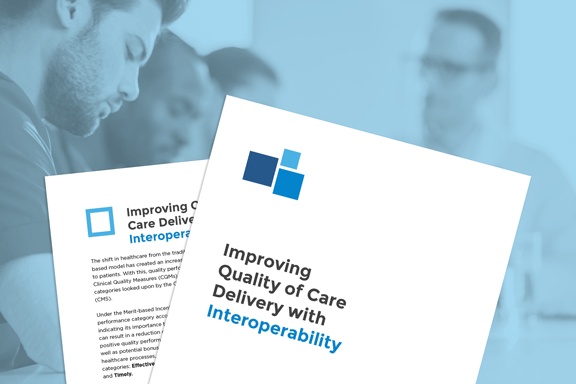
Download whitepaper: Improving Quality of Care Delivery with Interoperability
A critical component of delivering quality care is ensuring effective care coordination between physicians, nurses, pharmacists, behavioral health specialists, insurance plans, community-based organizations, and more. The consequences of poor communications during care transitions can be severe, both in terms of risk to the patient and unnecessary costs. For example, medication errors, duplicative diagnostic tests, unnecessary emergency room visits, and preventable hospital admissions and readmissions are all symptoms of fragmented care resulting from the lack of access to necessary information.
Improving communication and information exchange during care transitions reduces the possibility of breakdowns in care delivery—which simultaneously allows for better decision making, treatment plans, and health outcomes. The ability to seamlessly exchange electronic information about different aspects of care is essential to achieving this.
A comprehensive healthcare data integration solution can help to enable rapid, reliable data interoperability, and play a significant role in care coordination and improving the quality of care delivery. An example of this concept in action comes from Northern Physicians Organization (NPO), a physician-led group that helps to provide IT services to primary care providers in Michigan.
NPO was facing several challenges in facilitating the exchange of information among different practices, hospitals, and post-acute care facilities due to the organizations’ disparate electronic medical records (EMRs) and varying workflows. Along with the need to manage a multitude of EMRs and the corresponding differences in data formats, a limited amount of internal IT resources compelled NPO to search for an interoperability partner.
NPO ultimately chose to collaborate with iNTERFACEWARE to deploy its Iguana® integration engine to facilitate faster, more effective communication, enabling electronic patient information to be easily shared between healthcare providers. This helps to ensure that accurate and up-to-date patient health information is available and distributed among all the parties that have active care relationships with a particular patient—enabling its members achieve their objectives of improving the patient experience of care and the overall health of populations, while reducing the cost of care.
If you are interested in learning more, check out our new whitepaper: Improving Quality of Care Delivery with Interoperability
